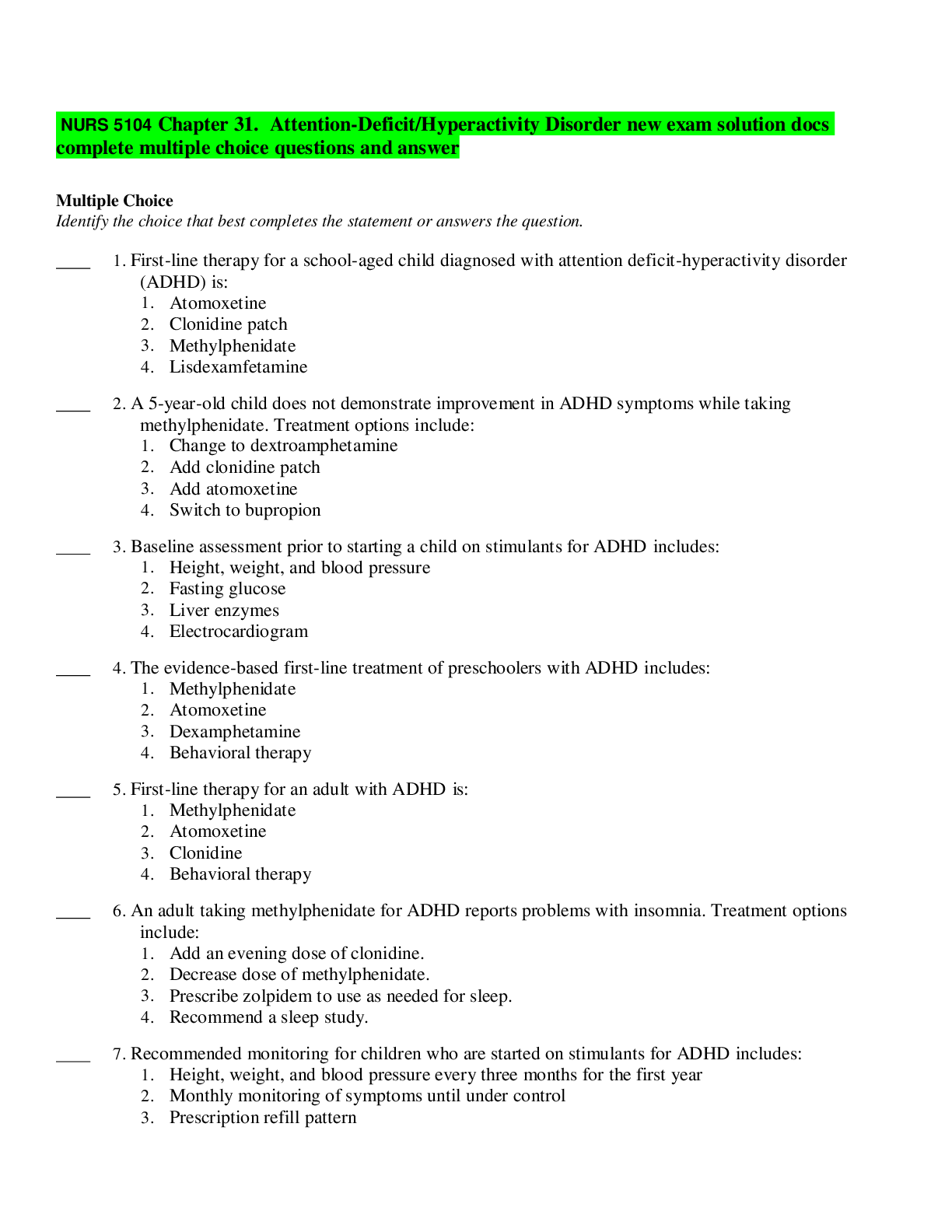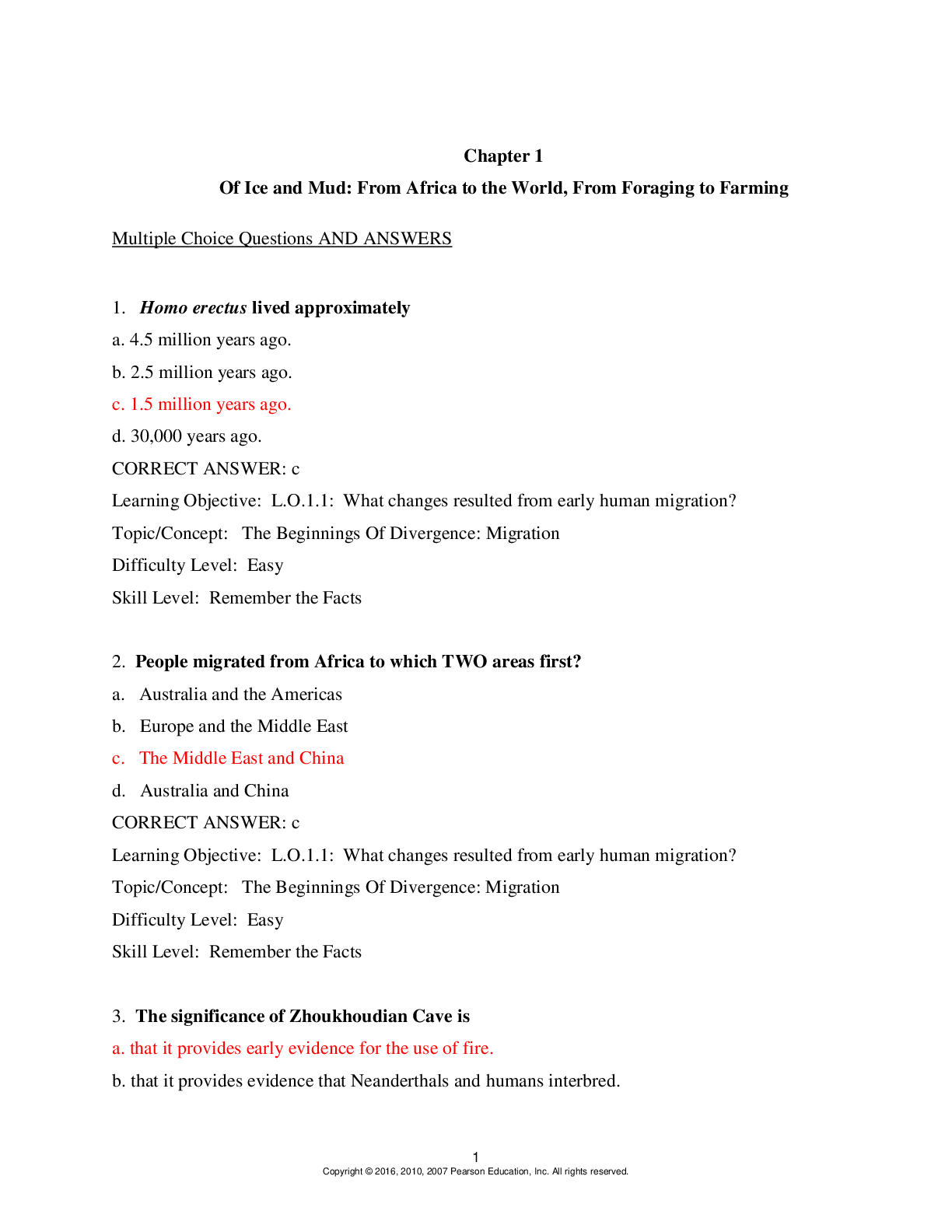Management > QUESTIONS & ANSWERS > University of Wisconsin, -Parkside - MGT 349: MANAGEMENT 349 ABBREVIATED SAMPLE IN-CLASS MID-TERM EX (All)
University of Wisconsin, -Parkside - MGT 349: MANAGEMENT 349 ABBREVIATED SAMPLE IN-CLASS MID-TERM EXAM 2016 NOTE AND DISCLAIMER: This document is intended to represent a sample of the type of multiple choice questions and problems anticipated on the first exam. Students may find the questions on the actual exam to be different in context and either easier or more difficult than those on this sample exam.
Document Content and Description Below
MANAGEMENT 349 ABBREVIATED SAMPLE IN-CLASS MID-TERM EXAM 2016 NOTE AND DISCLAIMER: This document is intended to represent a sample of the type of multiple choice questions and problems anticipated o... n the first exam. Students may find the questions on the actual exam to be different in context and either easier or more difficult than those on this sample exam. ************************************************************************ CHAPTER ONE 1. The study of organizational behavior is concerned with: A. psychosocial, interpersonal, and organizational structure B. psychosocial, interpersonal, and work design C. interpersonal, group dynamics in organizations, and work design D. psychosocial, interpersonal, and group dynamics in organizations 2. All of the following are internal behavioral processes except: A. cognition B. perceiving C. judging D. leading 3. When a manager states, "Mary is an outstanding employee because she has a high need for achievement,” the manager is using which explanation for Mary's behavior? A. internal B. external C. interactive D. cultural 4. In an open system the transformation or conversion of inputs to outputs is accomplished with: A. technology B. task structure C. borrowed financial resources D. robots 5. The beliefs and assumptions about people, work, and the organization best reflects the: A. formal organization B. overt part of an organization C. informal organization D. social surface 6. Hawthorne discovered the importance of the formal organization in controlling employee behaviors. A. true B. false 7. A leading force currently driving change at work is: A. global competition B. politics C. quality D. process management 8. Total quality management is an employee-driven philosophy of management. A. true B. false 9. Globalization, workforce diversity, technological innovation and __________ are four interrelated themes of importance for managing organizational behavior into the 21st Century. A. customer satisfaction B. employee compensation C. moral and ethical behavior D. job analysis 10. Learning about organizational behavior can best be described as a(an): A. mastery of basic objective knowledge B. development of specific skills and abilities C. application of knowledge and skills D. multidimensional activity 11. Peters and Waterman changed the ideas about excellence in business when they wrote the 1980’s best seller In Search of Excellence. A. true B. false 12. The Relationship Era in the history of business was spurred by the growth of management information systems and globalization. A. true b. false CHAPTER TWO 13. Given the increasing attractiveness of US business ventures in China, a major challenge for western managers will be to understand the Chinese practice of guanxi, which is: A. the strong use of rewards and punishment in the workplace B. the use of personal connections to conduct business C. The practice of group members evaluating the performance of individual group members 14. Hofstede's work casts doubt on the: A. ability of cross-cultural attitudes to predict job related attitudes B. use of masculinity versus femininity as an orientation which has cultural variation C. use of time as an orientation that differs across cultures D. the universal applicability of U.S. management theories 15. A repatriate manager is a manager who works in a country other than his or her home country. A. true B. false 16. Attention to diversity has particularly increased in recent years because of: A. The use of telecommunications B. The opportunity for use of lower cost labor in other countries C. The changing demographics of the working population D. Legislation 17. The glass ceiling is a transparent barrier that has been traced to a lack of ability. A. True B. False 18. If you were born from 1965 to 1976 you could be called: A. part of the silent generation B. a Gen X'er/baby buster C. a baby boomer D. a Gen Y'er/millennial 19. Which statement best captures the spirit of managing diversity? A. It is being a good corporate citizen. B. It is complying with affirmative action. C. It is assimilating women and minorities into a dominant male culture. D. It is a painful examination of hidden assumptions that employees hold. 20. Corporations and business enterprises are more prone to subscribe to: A. cultural relativism B. universal moralism C. consequential ethics D. rule-based ethics 21. The obligation of an organization to behave in ethical ways is known as: A. social environmentalism B. organizational morality C. social responsibility D. ethical imperative 22. Hoteling and satellite offices are alternative work arrangements which reflect a trend toward the: A. digital age B. “people work everywhere” concept C. virtual office D. real time office 23. Which of the following statements does not reflect skills consistent with the changing nature of managerial work? A. human and conceptual skills are more important than technical skills B. managers must use more participative management styles C. managers must help workers make effective use of new technologies D. managers must focus more on helping workers manage the stress of their work CHAPTER THREE 24. Kurt Lewin may have best captured alternative explanations for human behavior when he stated behavior is a function of: A. the individual B. the consequences of compliant and deviant behavior within social groups C. culture and the systemic properties of the organization D. the person and the environment 25. Personality is shaped by: A. consequences of behavior and the environment B. the person and the situation C. thinkings and feelings D. heredity and environment 26. As a supervisor of a group of employees, all of whom have an internal locus of control, you should: A. closely supervise them B. provide explicit and frequent job instructions C. expect to frequently discipline group members for slowness and lack of initiative D. allow them considerable leeway in determining how to perform their work 27. Which of the following is one of the most important determinants of high self-efficacy? A. an internal locus of control B. high self-esteem C. previous success D. the tendency to be a low self-monitor. 28. The extent to which people base their behavior on cues from other people and situations refers to: A. locus of control B. self-esteem C. self-efficacy D. self-monitoring 29. As a manager that understands the implications of self esteem on work behavior, you should: a. clearly measure the results of employee tasks B. provide continual positive feedback C. clearly tie rewards to performance D. provide them appropriate challenges and opportunities for success 30. A count of the times a student asks a question or makes a comment in an organizational behavior course is a/an: A. self-report measure of personality B. projective measure of personality C. example of the MMPI D. behavioral measure of personality 31. The most common method of assessing personality is the: A. projective test B. behavioral measurement through observation C. self-report questionnaire D. Rorschach ink blot test 32. According to the Jungian approach to personality, the basic preference that reflects what we pay attention to or how we prefer to gather information is: A. extraversion/introversion preference B. sensing/intuitive preference C. thinking/feeling preference D. judging/perceiving preference 33. The three major categories of factors that influence our perception of another person include: A. characteristics of ourselves, the target person, and the situation B. availability of information, the target person, and the situation C. recency of information, availability of information and consistency of information D. characteristics of ourselves, the target person, and the consistency of information 34. The tendency to choose information that supports our individual viewpoints while discounting information that threatens our viewpoint is considered _____. A. stereotype B. selective perception C. first impression error D. self-fulfilling prophecy 35. A supervisor’s high expectations of a new employee and the subsequent high performance of that employee is known as: A. impression management B. stereotyping C. perceptual bias D. self-fulfilling prophesy 36. The tendency to make attributions to internal causes when focusing on someone else's behavior is: A. remedied by the discounting principle B. known as the fundamental attribution error C. has been shown to not be related to cultural pre-dispositions D. known as the fundamental cognitive error 37. A Type A personality would be most likely to: A. be highly creative B. enjoy leisure and quiet time C. eat his/her meals quickly D. concentrate on one task at a time [Show More]
Last updated: 1 year ago
Preview 1 out of 5 pages
.png)
Reviews( 0 )
Document information
Connected school, study & course
About the document
Uploaded On
Jan 11, 2021
Number of pages
5
Written in
Additional information
This document has been written for:
Uploaded
Jan 11, 2021
Downloads
0
Views
41





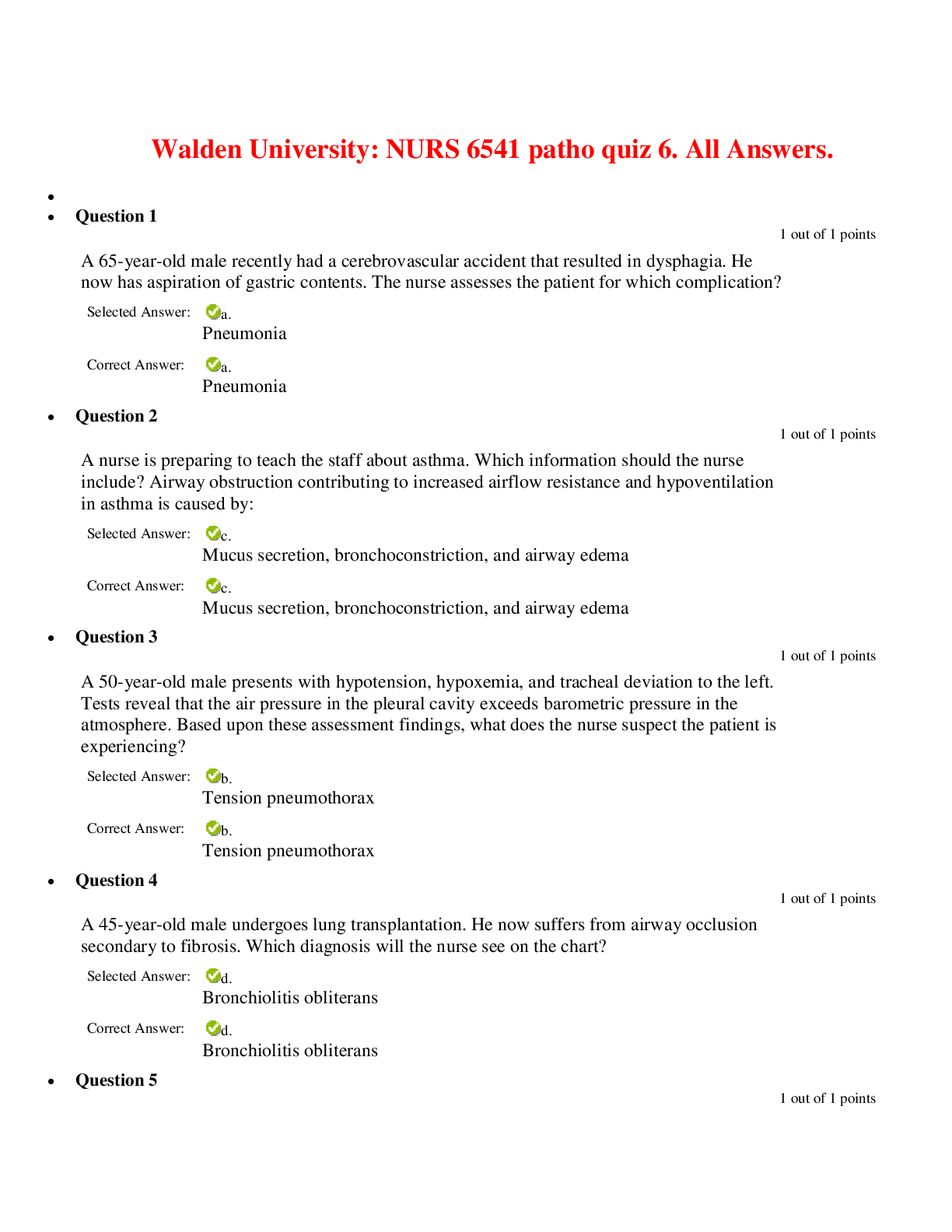





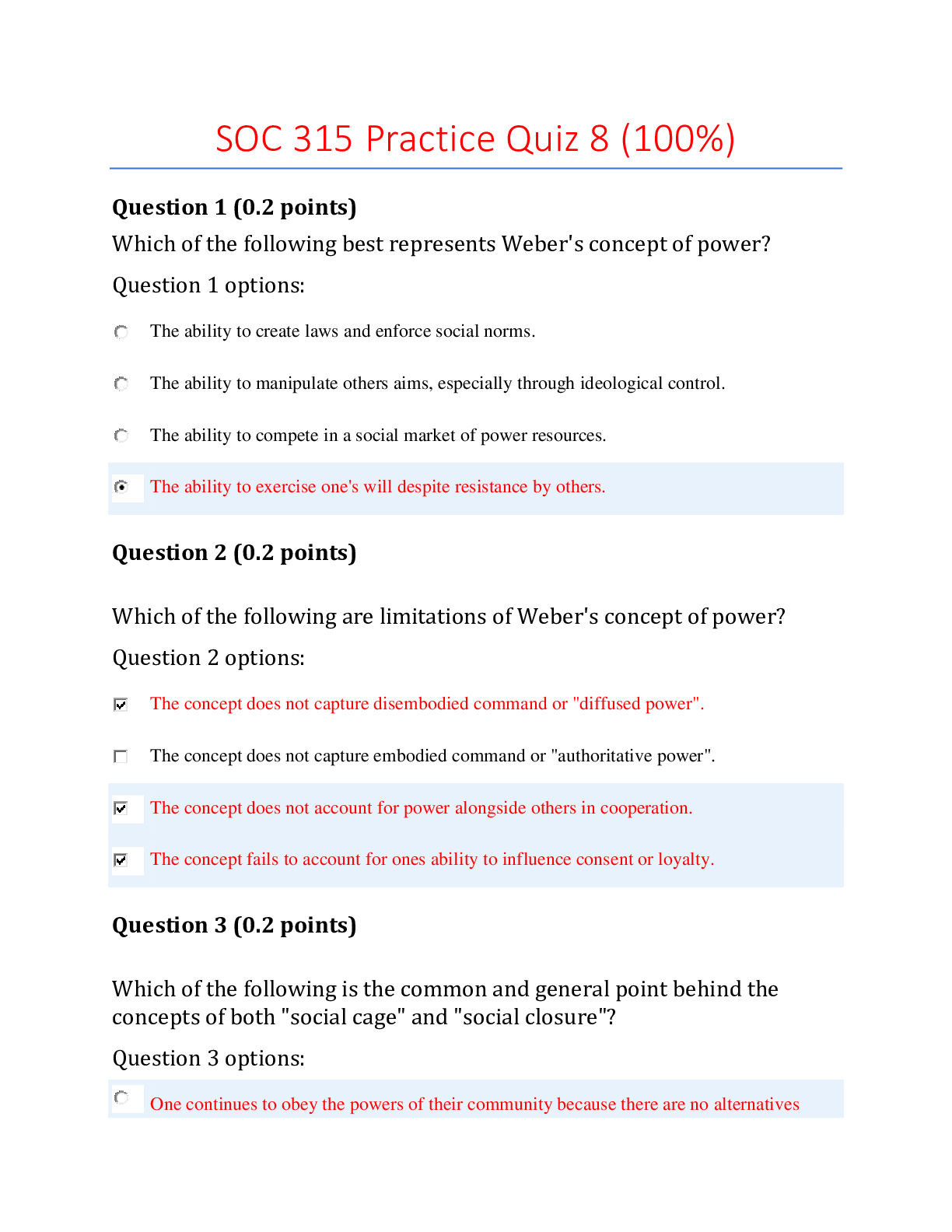
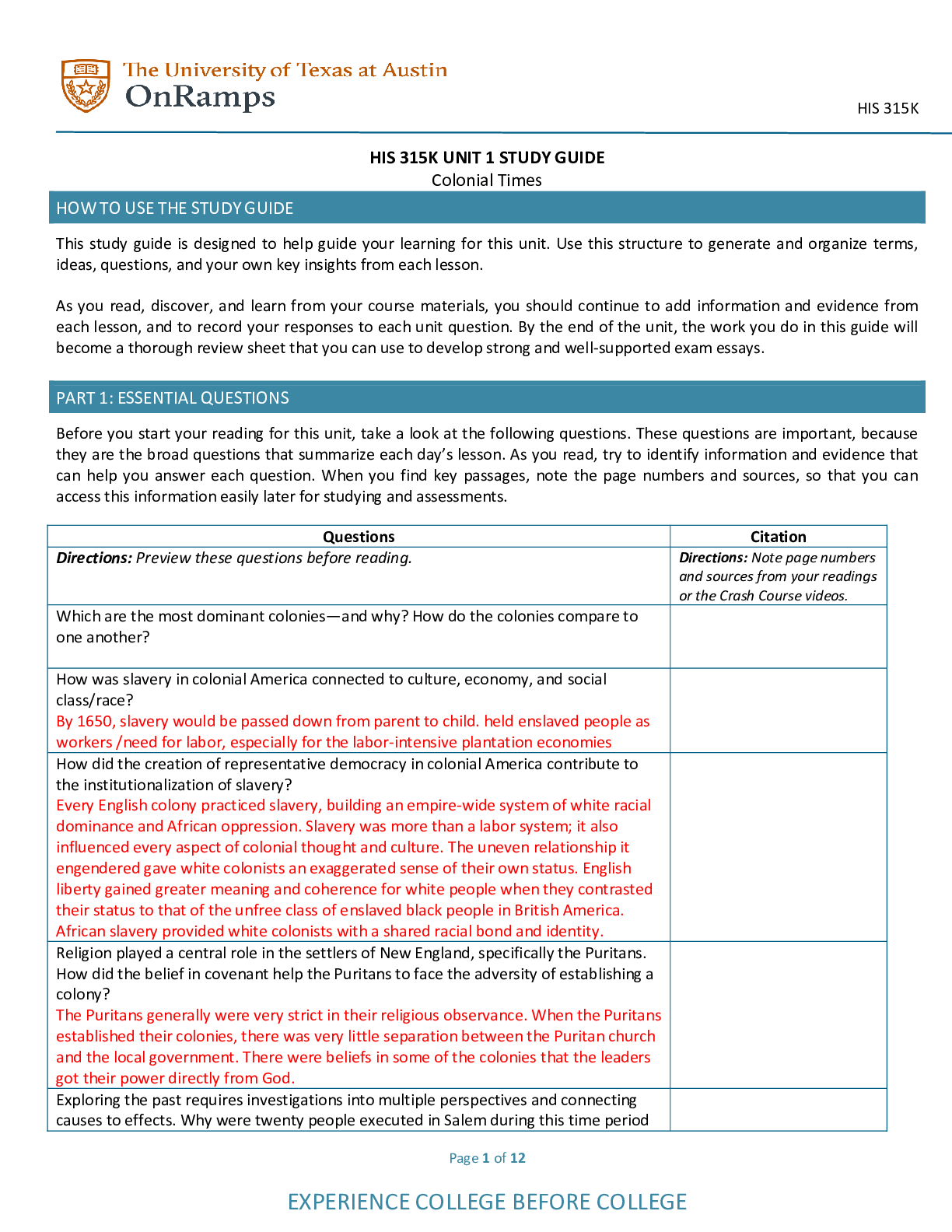
.png)

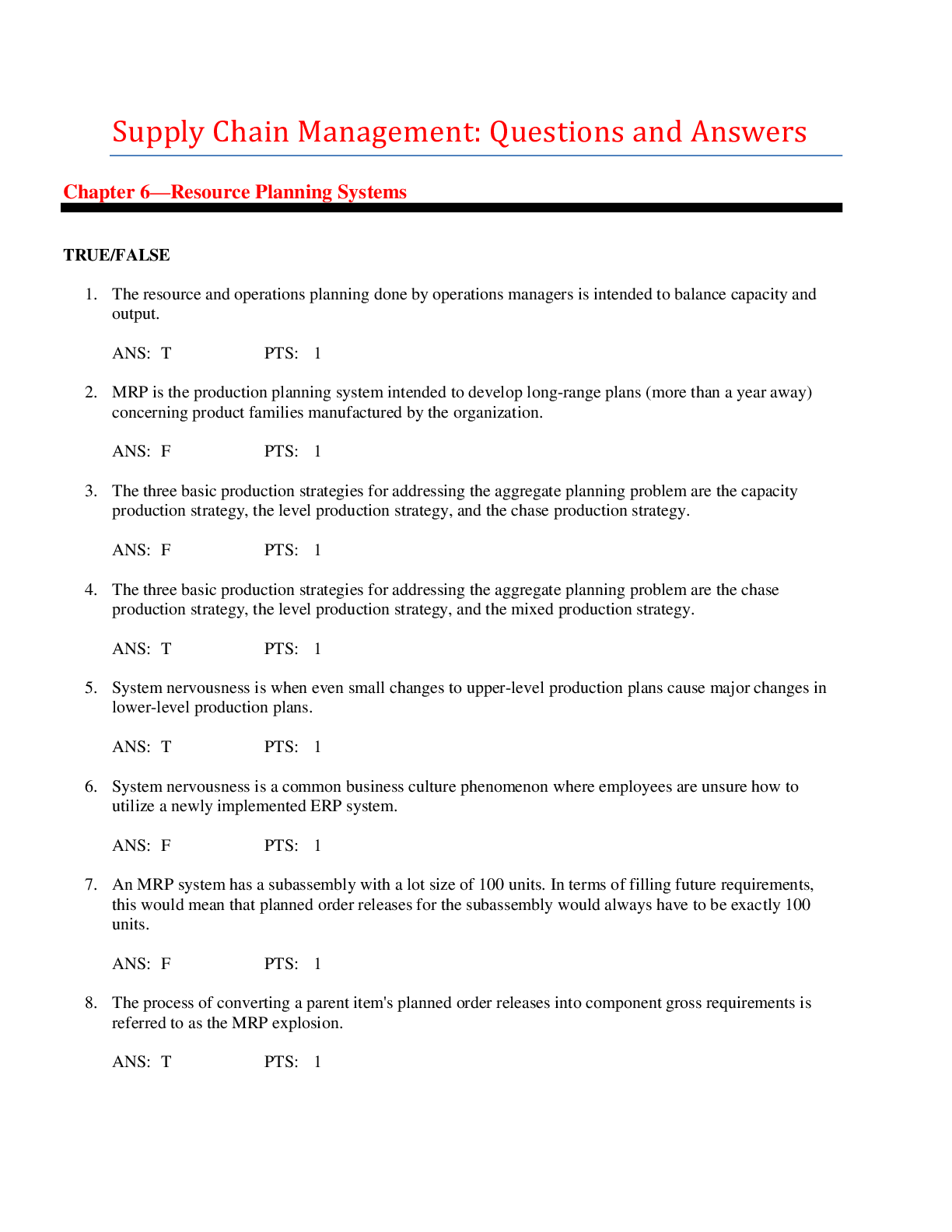
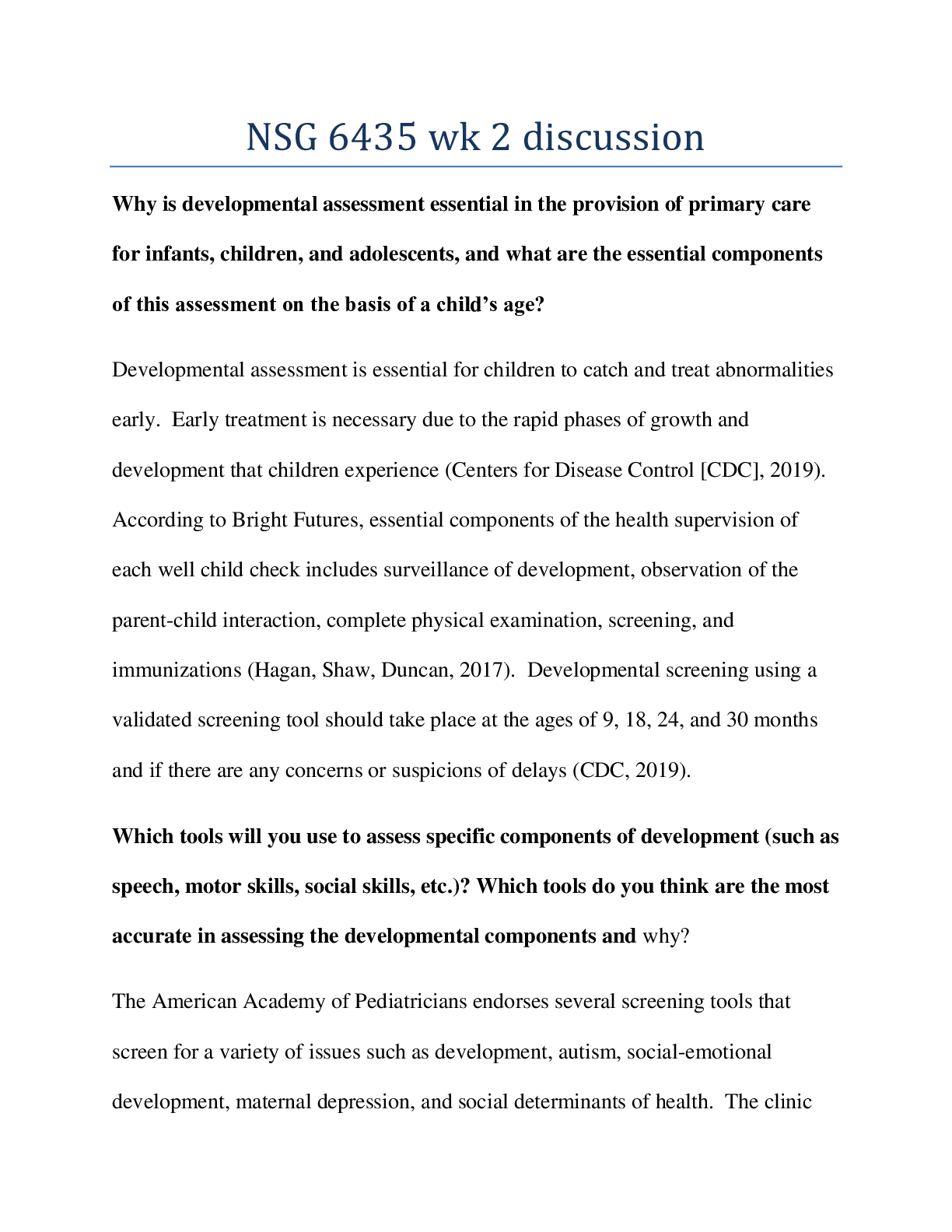
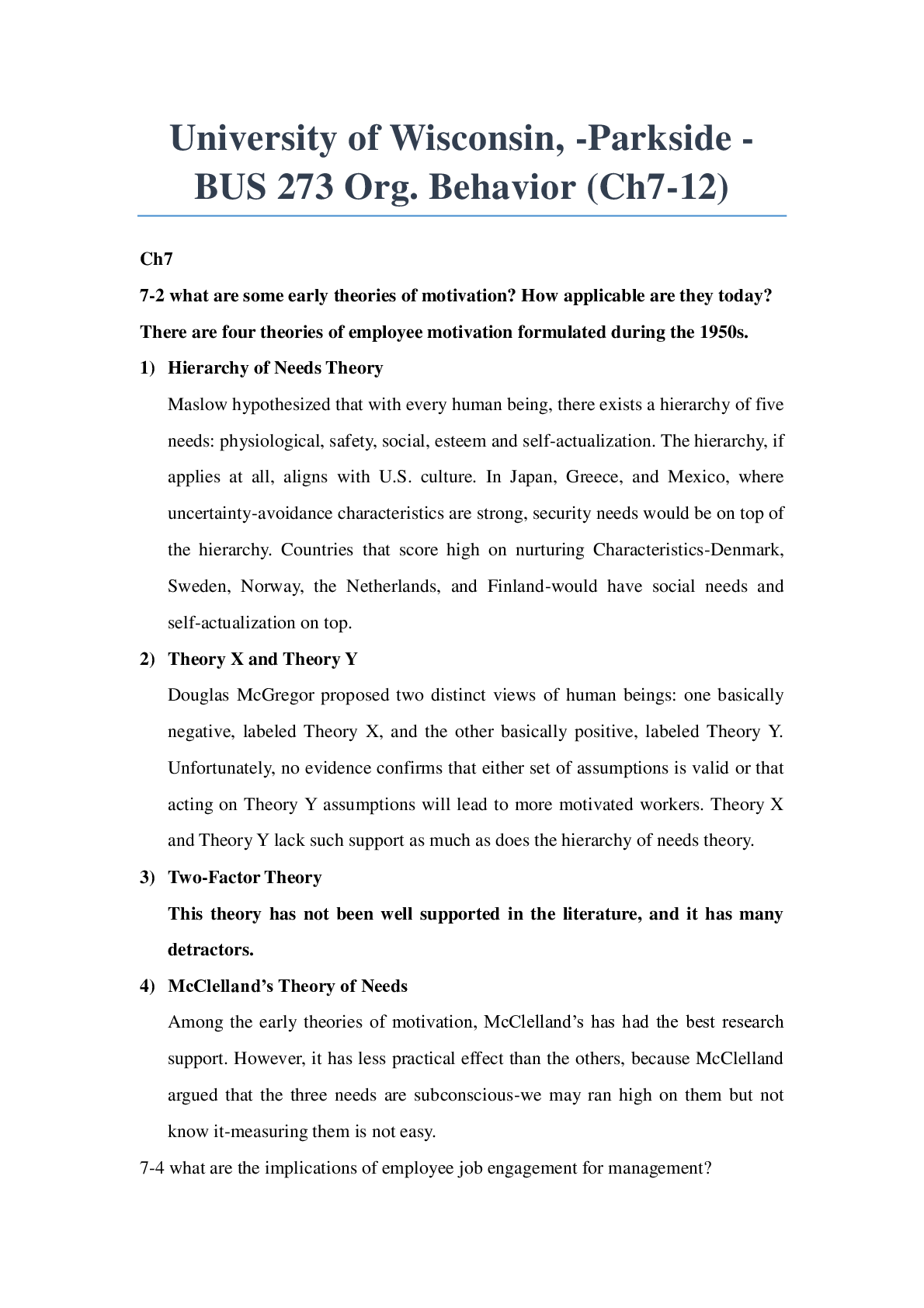

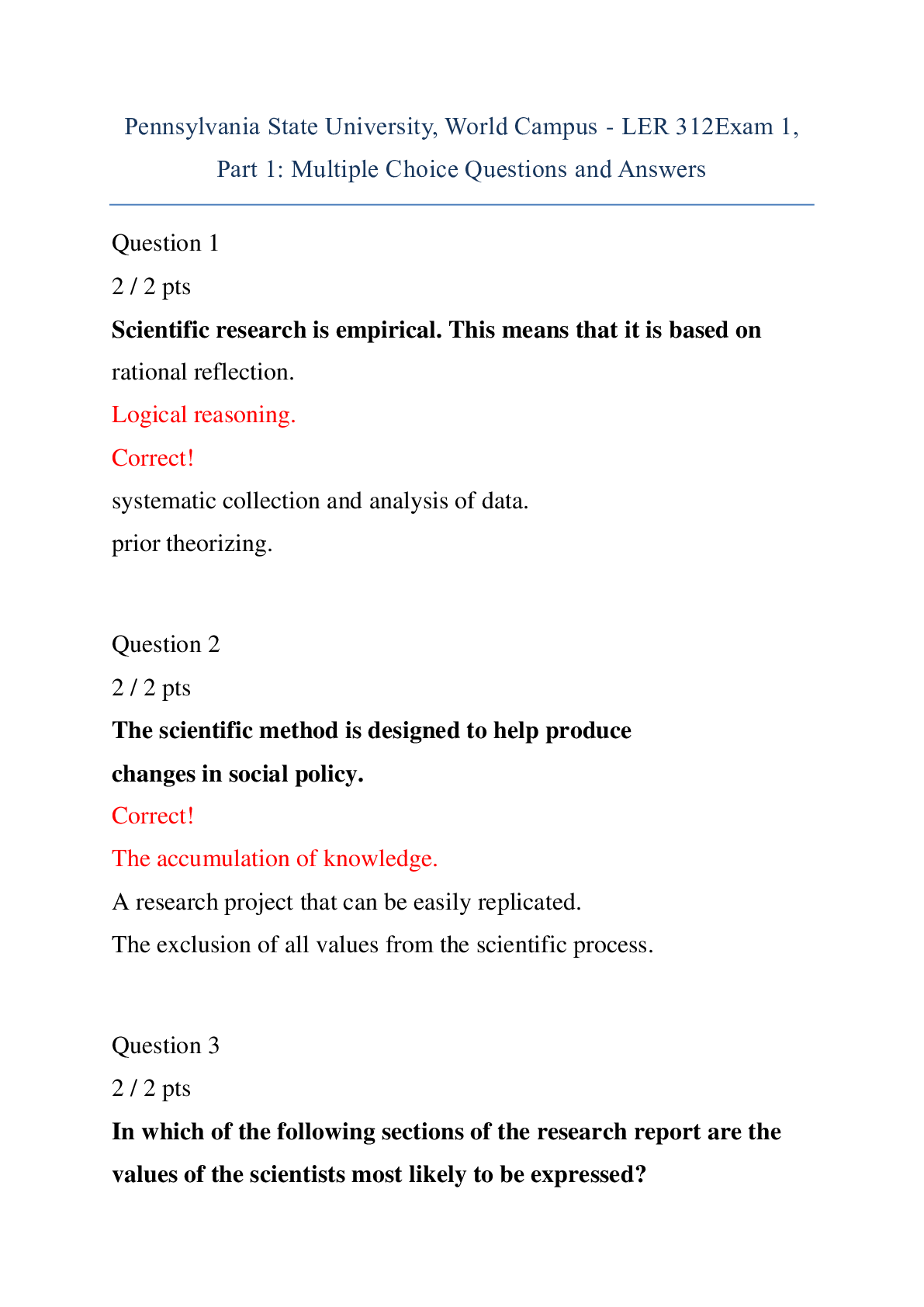
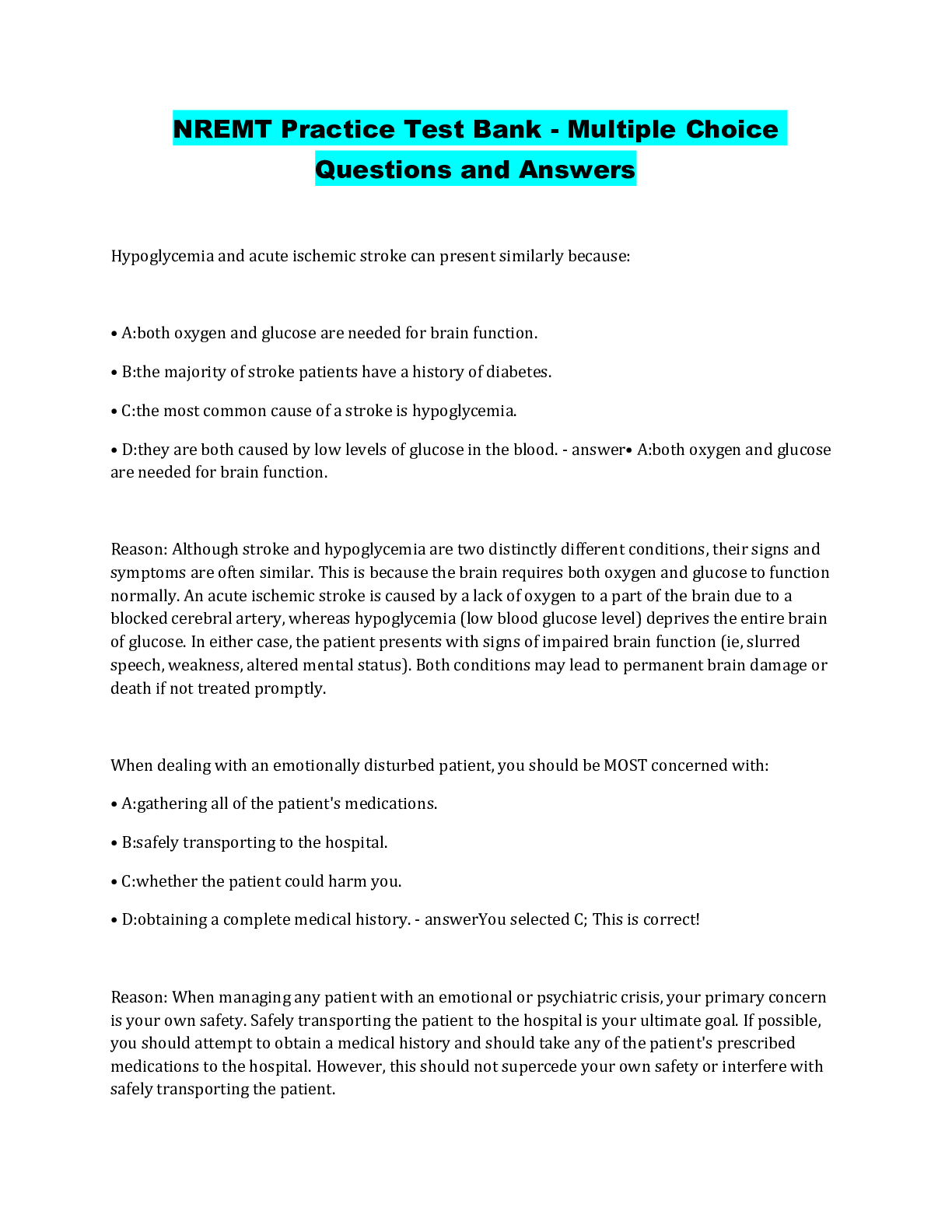
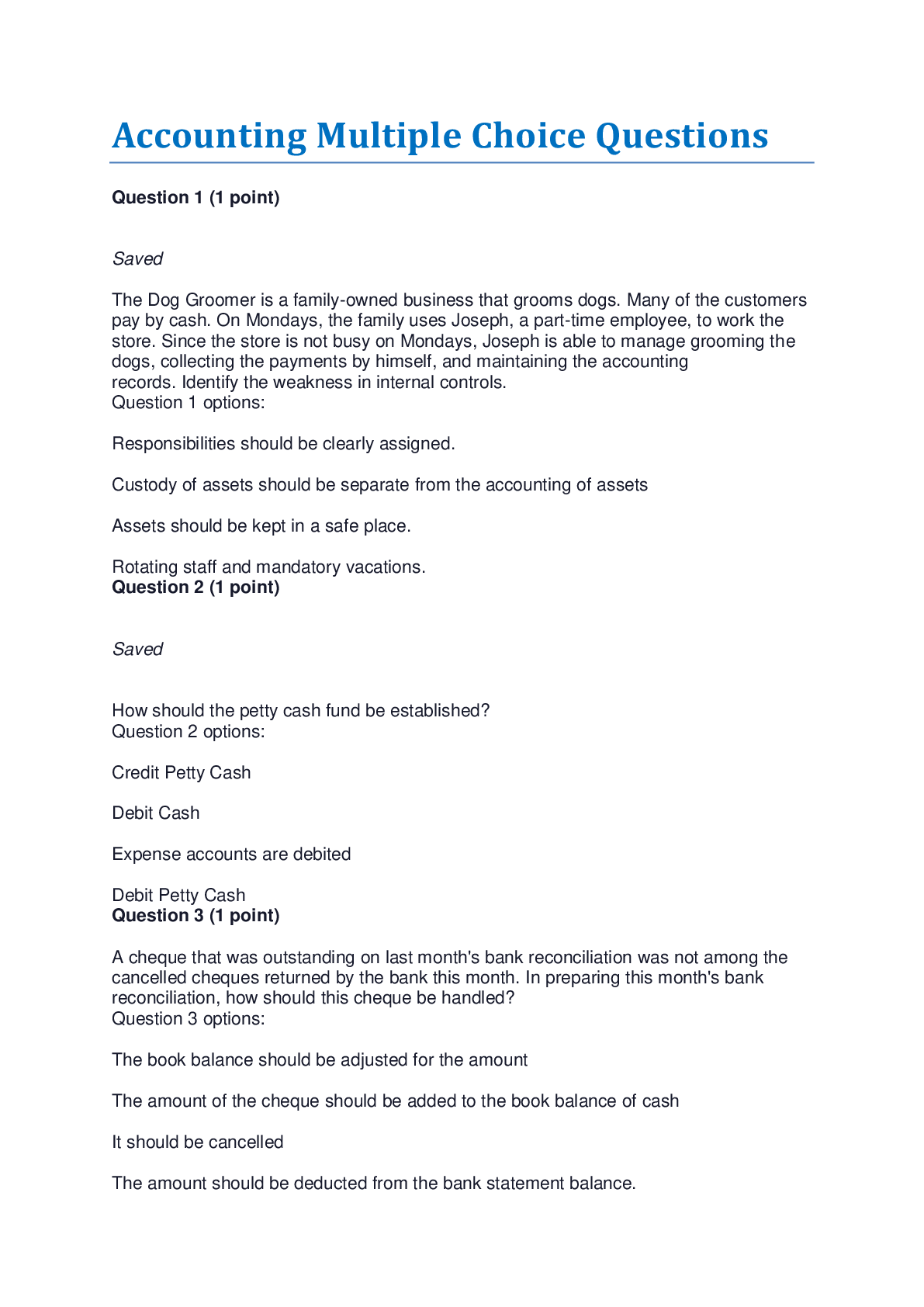
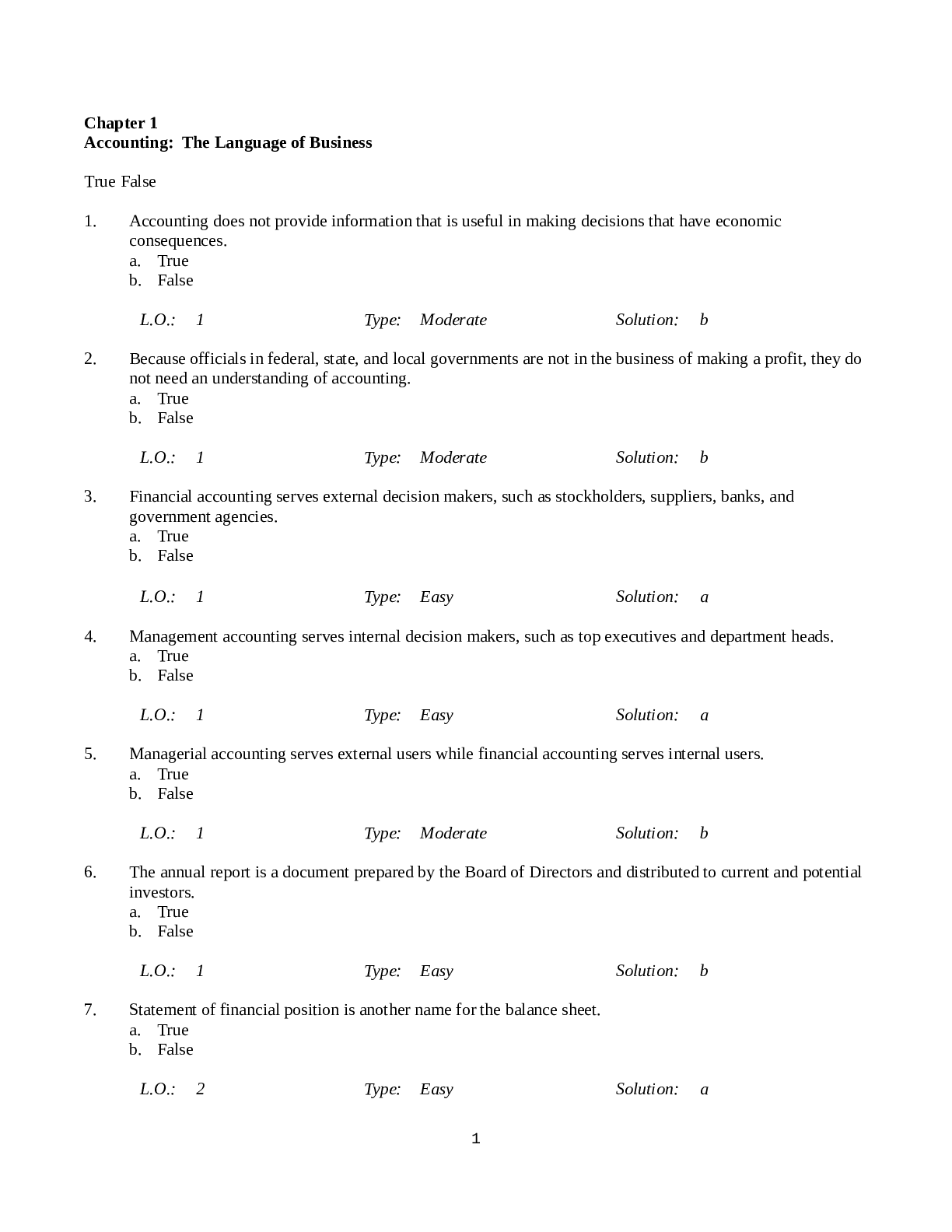

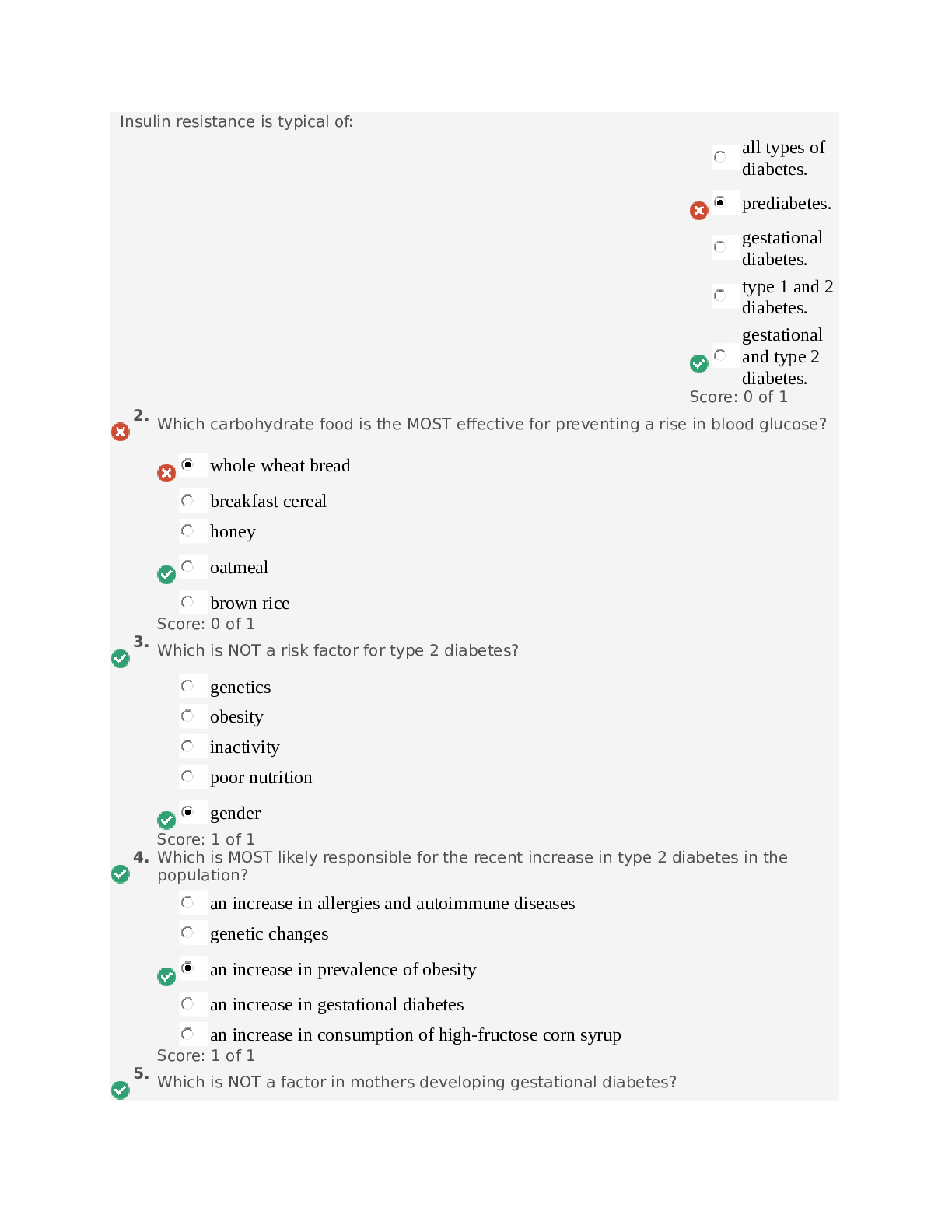
.png)
.png)
.png)
 Peter G.png)


 answers (1).png)

